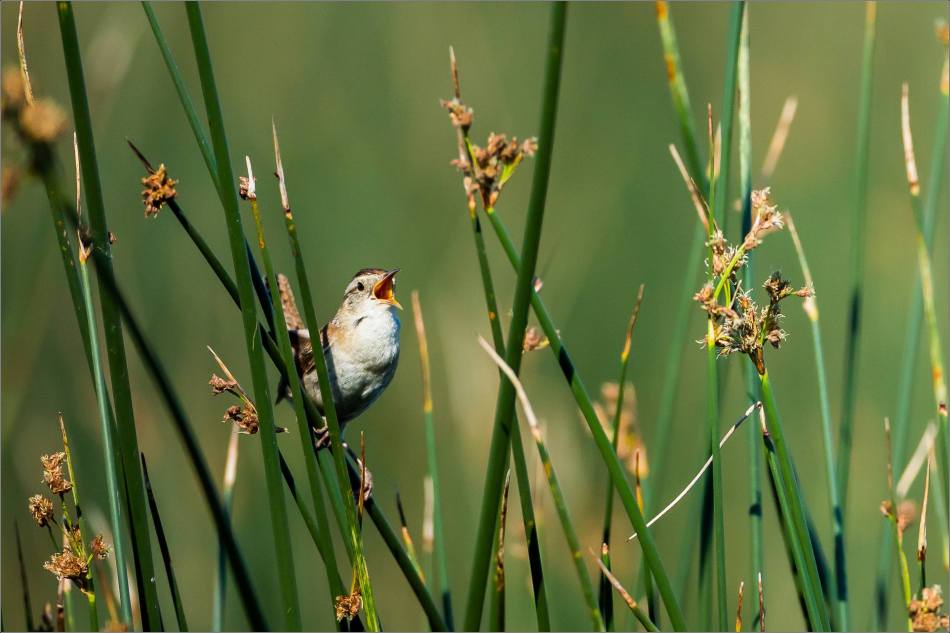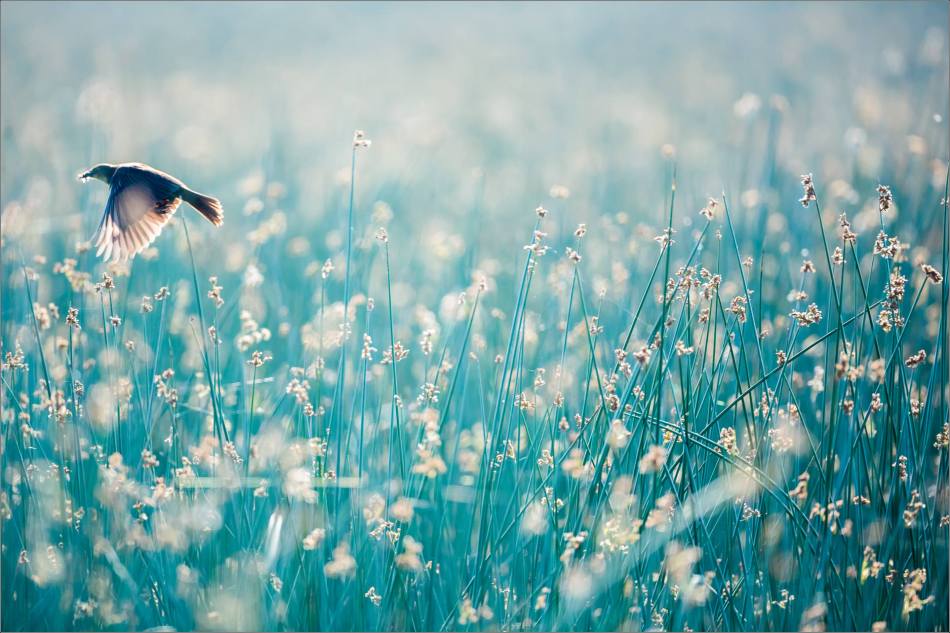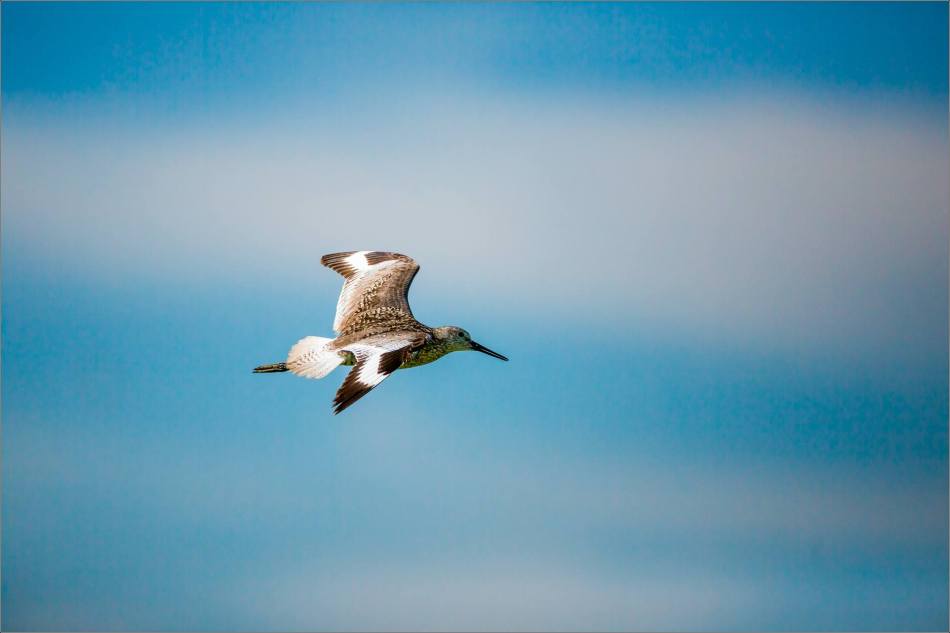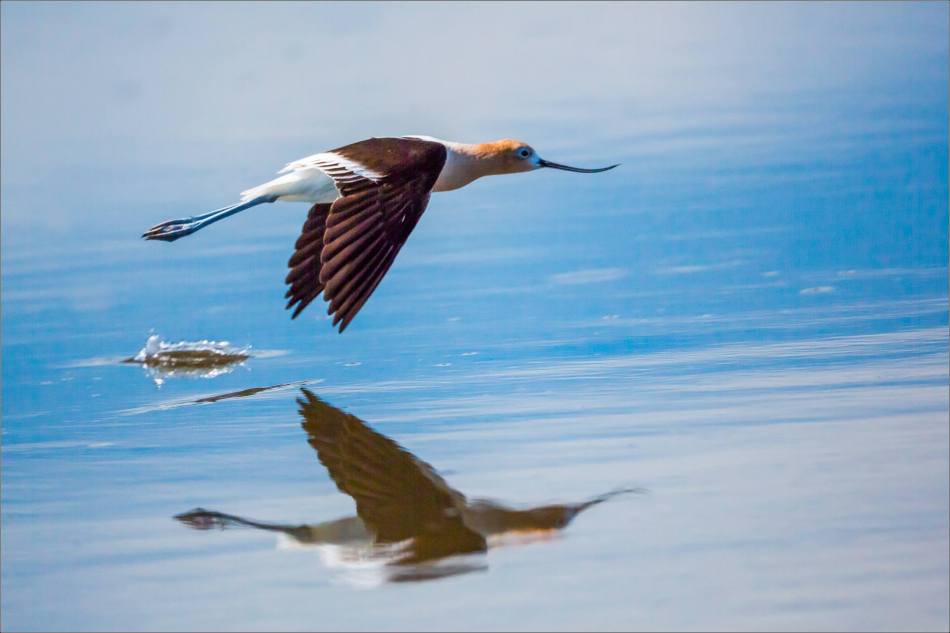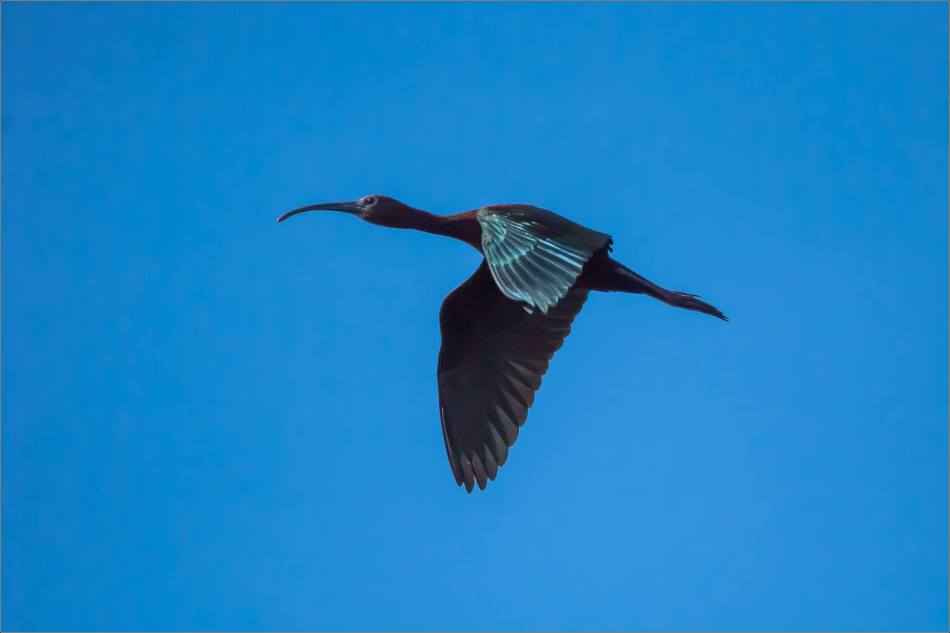Avocets at Frank Lake in May
I went to Frank Lake in early May. A short drive east of High River, this is a wetland controlled by Ducks Unlimited Canada and is designated as an Important Bird Area. The migratory and summer populations both have a large variety of bird species. I enjoy photographing there – it’s a beautiful location on the prairies, has abundant wildlife and offers a wide area across three basins to explore.
American avocets are one of my favorite shorebirds. On my last visit, I had great opportunities to photograph them from mid-afternoon through dusk. These are a few of those images. Thank you for having a look.
Canada geese skirmishing on Frank Lake
The tall grass near the bird blind on Frank Lake is nesting ground for Canada geese, ibis, yellow-headed blackbirds, herons and more. At dusk the cacophony rising up from these residents can be surprisingly loud. There are birds chasing one another, others returning with material for their nest, food for their chicks as well as occasional territorial spats. It’s an incredible spot to set up near the trails and watch life on a marsh. On a visit there in early May the weather was warm and the sunlight before dusk was incredible.
Throughout the evening, the Canada geese were active with a couple being particularly feisty. That presented some new image opportunities that I had not yet photographed which is always exciting for me.
When the sun set, the activity level along the shoreline rose noticeably. All manner of birds flew overhead and low along the water. Some of the geese moved their skirmishing to the small pond directly in front of me. I didn’t move around and they seemed oblivious, or at least undistracted, by me – which was perfect. I stayed until it was dark and loved every minute.
A short study of an old friend
I’m not sure if it’s the attractive color scheme, the way they move through water or something more ethereal that draws me to the avocet. This is a bird that I am endlessly curious about and it steals time from other shorebirds whenever I cross ones path. Last weekend at Frank Lake was no different.
Spring at this wetland just east of High River has a myriad of summer residents settling in and migrating travelers on their way north. This visit along the shoreline counted ibis, night herons, cormorants, killdeer and more fly by as the evening shadows slowly grew. I photographed many of them but none as often as the avocets.
Most of these were paired up and the couples swam together or high stepped in the shallows near one another while they fished. I saw two sets skirmish over territory briefly. However most just ambled along undisturbed – company to one another and disinterested in much else.
Chasing away the competition
The American avocets were mostly paired up along the stretch of shoreline along Frank Lake when I went there last night. Here one avocet chased off another couple while the mate. Apparently defending territory they had claimed at some point.
Summer residents at Frank Lake
Frank Lake is just east of High River in southern Alberta and is a great location for birding throughout the year. In the summer, ibis, herons, avocets, blackbirds, ducks, pelicans and a menagerie of other avians congregate there for their summer residence.
On a recent visit, I enjoyed watching and photographing a number of these birds. The Black-crowned night heron above was of particular interest to me as it stalked along this fence above a stream where it emptied into the lake.
American avocets at Frank Lake
Frank Lake, just east of High River, is a great refuge for birds during migrations. It also serves as a summer home and breeding ground for many shorebirds and waterfowl. The sandy flats, rocky outcrops, tall reedy marshes and open water appeal to a wide range of birds and provides nice habitat to raise their chicks in.
The American avocet (Recurvirostra americana) is a beautiful shorebird that summers in Frank Lake. This is the northern end of their summer range – I’m glad they choose to come this far. I have photographed them at the lake a few times before where they have been feeding in the muddy shallows and beaches. On a trip there a couple of weeks ago, I was looking for some in flight images. When I had walked down to the shore, all the birds were active. I don’t think it was because of me or any raptors that had rustled everyone up. It seemed like it was a sunny afternoon, lot’s of chicks were hungry and all of the birds were flying, swimming and running around. It was a great scene with pelicans, stilts, geese, gulls and ducks all milling about.
And avocets! I found two small groups of them along the shoreline. One was a group of adults that generally left one another alone to forage for the tiny insects they favour. The other was a pair with their brood of four chicks.
From the adult group, I was able to track a few fliers. The family was a great bonus as I had not seen avocet babies before and I enjoyed watching them following their parents around.
White-faced Ibis on the prairies
Canon 5DIII camera with a Canon 500mm lens: 1/8000th of a second at f/4.0 on ISO 800
After spending time with the Avocets on the northwest corner of Frank Lake, I turned my attention skyward and watched for the White-faced Ibis (Plegadis chihi) who fly between the spots they like to fish and their nests in the tall reeds near the viewing cabin. The feathers on both sides of their wings shimmer when caught by sunlight and they have the long, down-curved bills inherent to the Ibis family of birds. I find them to be as beautiful as they are striking and unusual.
Canon 5DIII camera with a Canon 500mm lens: 1/4000th of a second at f/5.6 on ISO 2500
I had only seen them from a distance previously as their nests are far from the shoreline that is accessible (I’ve heard of some people stalking through the reeds towards these nests but that’s nothing I’m interested in doing given the potential for damage and disruption) and they were staying close to them on my last visit. This time around, there were several of these iridescent birds in flight overhead at any given moment.
Canon 5DIII camera with a Canon 500mm lens + 1.4X extender: 1/6400th of a second at f/6.3 on ISO 3200
I set up near a small pond separated from the lake by reeds and grasses and had great opportunities to photograph these birds flying. In addition to being along the flight path of the Ibis, Double-crested Cormorants and Black-crowned Night-Herons were frequently seen highlight species.
Canon 5DIII camera with a Canon 500mm lens: 1/8000th of a second at f/4 on ISO 1600
I saw a few Ibis carrying grasses and reeds as they flew towards the nesting area. Presumably, constant maintenance is required to keep the nest in good repair. I photographed one of these deliveries when the Ibis below flew relatively close by.
Canon 5DIII camera with a Canon 500mm lens + 1.4X extender: 1/2000th of a second at f/6.3 on ISO 2500
After hanging out by the pond for a half an hour, a couple of shorebirds landed in the shallow water nearby. They flitted about and were joined by a few others at one point. The evening light was beautiful and I was very happy to have these little fellows to photograph against the bold patterns created by the stalks along the far side of the pond. About an hour later, I was really excited when two Ibis flew in and landed.
Canon 5DIII camera with a Canon 500mm lens + 1.4X extender: 1/250th of a second at f/8 on ISO 3200
They set to fishing right away and ended up staying for only five minutes or so. I’m not sure if they didn’t notice me when they flew in and when they did they took off. Or, they just decided to fish elsewhere. Whatever the case, it was really great to see them in another part of their environment.
Canon 5DIII camera with a Canon 500mm lens + 1.4X extender: 1/1000th of a second at f/11 on ISO 3200
The little shorebirds came out from the reeds they had slipped into when the much larger Ibis came in. I spent the rest of the daylight photographing them, particularly the Killdeer (Charadrius vociferus) below, as they carried out their hunting duties before night took over.
Canon 5DIII camera with a Canon 500mm lens + 1.4X extender: 1/1600th of a second at f/6.3 on ISO 4000
A few of Frank Lake’s Avocets
Canon 5DIII camera with a Canon 500mm lens + 1.4X extender: 1/2500th of a second at f/6.3 on ISO 1600
I have fallen in love with American Avocets (Recurvirostra americana) this year. These birds are beautiful and I enjoy watching them high step in the shallow water as they fish for insects and small crustaceans. Following the floods, which devastated nearby High River, I went down to Frank Lake – curious to learn how the wildlife that summers there had fared. I was very happy to see masses of birds in their respective nesting areas and flying overhead. I can’t say the lake wasn’t impacted but its residents appeared to be doing well.
Canon 5DIII camera with a Canon 500mm lens + 1.4X extender: 1/3200th of a second at f/6.3 on ISO 1600
I found a small colony of Avocets dispersed over a couple of hundred metres of shoreline west of the viewing blind on the lake. They were fishing close to the sand and within a couple of minutes of my arrival had drifted quite close apparently unconcerned with my presence. I settled in and spent most of the next hour following their activity on the water.
Canon 5DIII camera with a Canon 500mm lens + 1.4X extender: 1/4000th of a second at f/6.3 on ISO 1600
Seeing them fight over fishing territory is exciting as well. When one of the Avocets drifted past an invisible line, its neighbour would race across the water to confront the offender. It occurred only a couple of times while I watched them but the flurry of activity had my camera clicking and my attention captured. Usually one ends up running away but on one occasion the defender felt the need to take to the air and truly chase the other one away. Below, the chaser is falling back to the water while the other Avocet carried on several metres further along.
Canon 5DIII camera with a Canon 500mm lens + 1.4X extender: 1/500th of a second at f/11 on ISO 1600
The landing was nice as it banked slightly just above the water which created the opportunity for a dynamic image.
Canon 5DIII camera with a Canon 500mm lens + 1.4X extender: 1/320th of a second at f/11 on ISO 1600
Most of the time was spent watching the repetition of their stalk, pause, dip, sweep and catch cycle.
Canon 5DIII camera with a Canon 500mm lens + 1.4X extender: 1/4000th of a second at f/6.3 on ISO 1600
It seemed to go by quickly as enjoyable things often do.
Canon 5DIII camera with a Canon 500mm lens + 1.4X extender: 1/2500th of a second at f/6.3 on ISO 1600
A Ruddy Duck Outing
Canon 5DIII camera with Canon 500mm f/4 lens and a 1.4x extender: 1/2500 second at f/6.3 on ISO 800
The Ruddy Duck is an odd creature. Blue bill, white cheeks, russet toned back feathers with liberal sections of black and motley brown. I find them to be a beautiful bird but I wouldn’t take issue with someone who felt differently.
Canon 5DIII camera with Canon 500mm f/4 lens and a 1.4x extender: 1/1600 second at f/6.3 on ISO 1600
Canon 5DIII camera with Canon 500mm f/4 lens and a 1.4x extender: 1/2500 second at f/6.3 on ISO 1600
Along with photographing Yellow-winged Blackbirds and Eared Grebes during my last visit to Frank Lake, there were several Ruddy Ducks that swam nearby and were caught within my viewfinder.
Canon 5DIII camera with Canon 500mm f/4 lens and a 1.4x extender: 1/2000 second at f/6.3 on ISO 1600
The males were more prevalent, swimming in the open away from the reeds. I’m not sure whether the females were shy or, more likely, staying close to their nests. A few did pass by, this one came right in front of the blind providing a nice opportunity for me.
Canon 5DIII camera with Canon 500mm f/4 lens and a 1.4x extender: 1/1250 second at f/6.3 on ISO 800
The males came and went, chasing each other occasionally but mostly just skimming their bills along the water catching insects.
Canon 5DIII camera with Canon 500mm f/4 lens and a 1.4x extender: 1/5000 second at f/6.3 on ISO 1600
Canon 5DIII camera with Canon 500mm f/4 lens and a 1.4x extender: 1/5000 second at f/6.3 on ISO 1600
These ducks are known for their spiky tail which they often hold straight up when on display. They seem very formal, almost like a soldier in uniform and at attention, when they do.
Canon 5DIII camera with Canon 500mm f/4 lens and a 1.4x extender: 1/3200 second at f/6.3 on ISO 1600
Very cool birds. I’m hoping to see their ducklings on my next visit to the Frank Lake Conservation Area.
Canon 5DIII camera with Canon 500mm f/4 lens and a 1.4x extender: 1/3200 second at f/6.3 on ISO 1600
Eared Grebes at Frank Lake
Eared Grebes are a very cool bird. They look fantastic (especially the red eyes), are great divers and really show their personalities. I watched a group of eight that swam alone and in pairs on the marsh.
There were a couple of characters who squawked or bickered a little but mostly they all meandered around grabbing insects off the water, diving for things under it and paddling around.
–
–
–
–
I was watching these birds from the Ducks Unlimited blind on Frank Lake. They swam within a few yards many times and gave me a wonderful opportunity to observe them in good detail for over three hours.
It was a beautiful afternoon on the water and along with the Eared Grebes, I watched Western Grebes, Black-crowned Night Herons, White-faced Ibis, American Avocets, Yellow-headed Blackbirds, Ruddy Ducks and Canada Geese. It was a great afternoon on a beautiful Prairie lake.








































